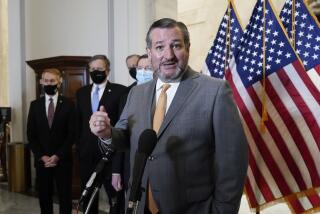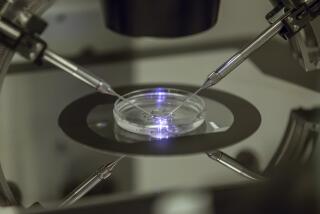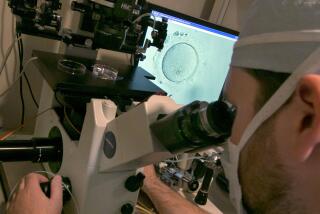Why Cripple Needed Research?
- Share via
The Bush Administration decision to extend the ban on federal funding of fetal tissue research may be a way to buy time for the President to rethink what appears to be an incomplete and flawed perception of this and the abortion issue. But any delay in this vital work could have life-and-death implications for millions of people.
Dr. James O. Mason, assistant secretary for health of the Department of Health and Human Services, justified the decision on grounds that the research could serve to encourage abortions. We cannot follow his reasoning. His comment trivializes the desperation that motivates most abortions. And it ignores the ironclad rules that have been developed by researchers to eliminate the risk of abuse.
We commented in some detail in May on the proposals of the Stanford University Medical Center Committee on Ethics for the control of fetal tissue. The rules developed at Stanford would assure that there would be no encouragement of induced abortions, that there could be no compensation or reimbursement, and that “medical personnel who perform induced abortions should not be allowed any direct benefit from the subsequent use of the fetal tissue.” Simple rules of that sort address any substantive concerns while still allowing researchers to proceed in this promising area of medical research.
Some in the anti-abortion movement have permitted their absolute opposition to abortions to intrude in this issue in ways we find regrettable. The fetal tissue from therapeutic or elective induced abortions comes from procedures sanctioned by the law. The constructive use of that tissue does not translate itself into either a moral or legal issue. There is the prospect of extraordinary medical advances affecting millions of people because of the unique properties of that tissue. There is a contradiction, it seems to us, in wasting that precious tissue in the name of protecting life. Indeed, to discourage the constructive use of that tissue is to deny the promise of treatment, perhaps cure, for millions suffering a diversity of diseases that includes childhood diabetes, Huntington’s, Parkinson’s and perhaps Alzheimer’s.






